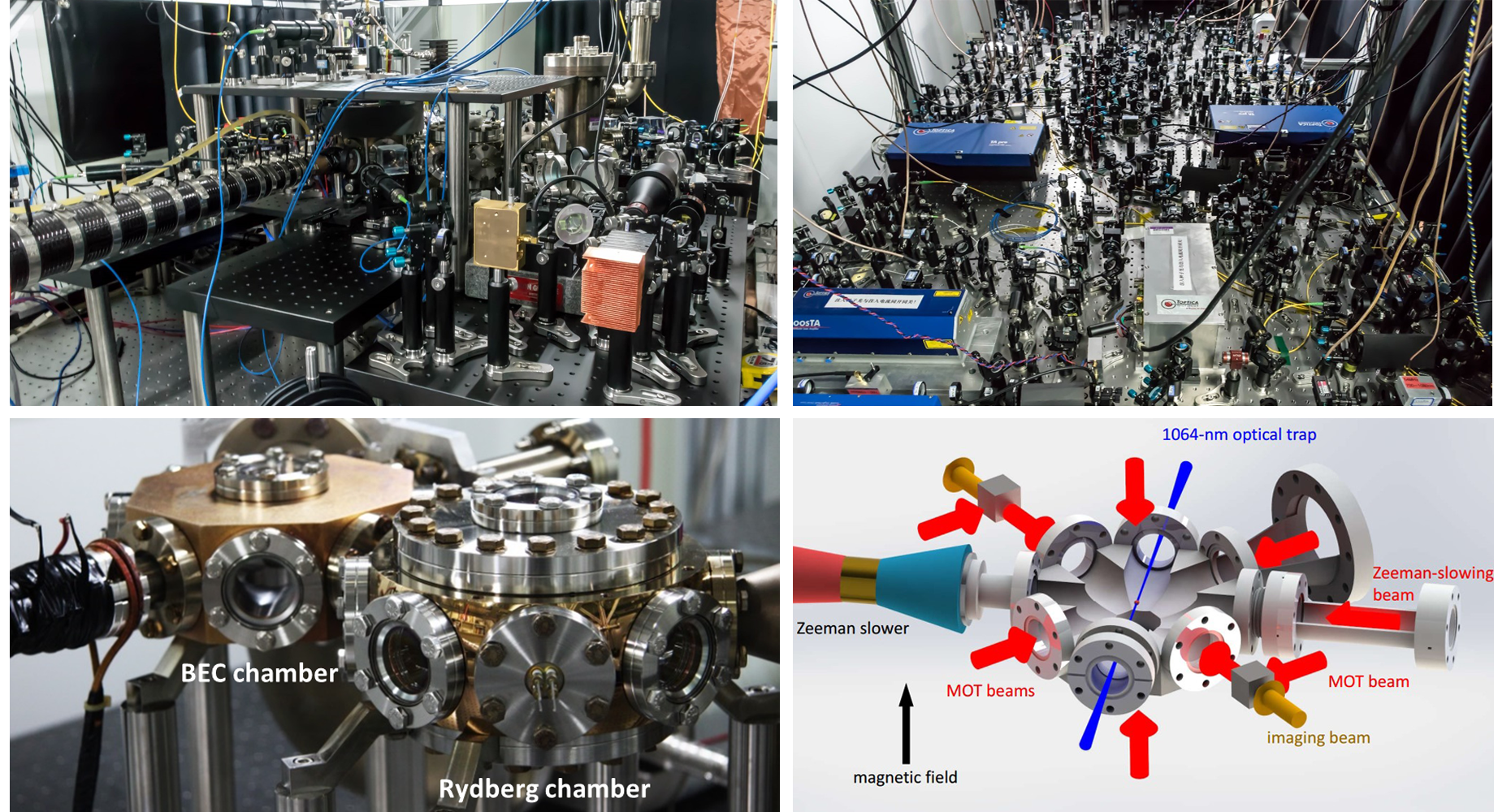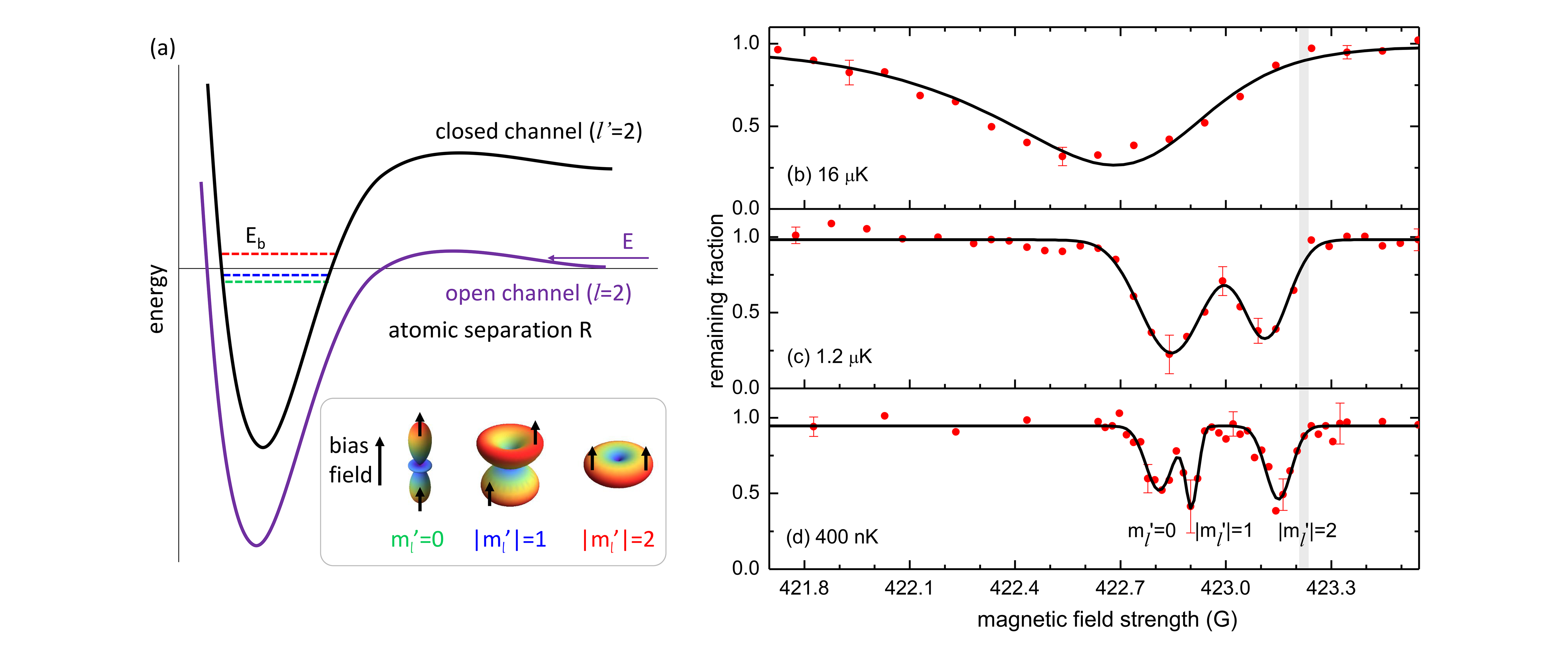



|
85Rb-87Rb mixtures and Rydberg atoms machine This project investigates strong interaction in ultracold atoms in a two-chamber vacuum system. In BEC chamber we study the tunable interaction in ultracold 85Rb-87Rb mixtures via Feshbach resonances. In Rydberg chamber we take advantage of the strong and controllable long-range interaction of Rydberg atoms to study strongly-correlated quantum systems such as quantum gates. |

| |
Recent results | ||
|
Observation of broad p-wave Feshbach resonances in ultracold 85Rb-87Rb mixtures[1] Ultracold atoms with controllable interaction via Feshbach resonances (FRs) have provided an ideal system to study universal behaviors in few- and many-body physics. We apply the semi-analytic multichannel quantum-defect theory to predict and characterize FRs in 85Rb-87Rb mixtures. The mixture is predicted and observed to exhibit a rich spectrum of “broad” s-wave and p-wave FRs. Of particular interest, a very broad entrance-channel dominated p-wave resonance is identified, which brings exciting opportunities for investigating universal behaviors with strong coupling in nonzero partial waves. We observe the Feshbach spectroscopy of the mixture at a temperature of 2μK in an optical dipole trap. The atom number is measured after ramping the magnetic field to a certain value and holding the mixture for some amount of time. The presence of FRs results in an enhanced atom loss due to the increase of the three-body recombination rate, and thereby shows up loss features in the spectrum as a function of the magnetic field. The essential elements of our experimental setup and the Feshbach spectrum for the 85Rb|2, −2> + 87Rb|1, −1> channel are shown in Figures below. 
[1]. S. Dong, Y. Cui, C. Shen, Y. Wu, M. K. Tey, L. You, and B. Gao, Phys. Rev. A 94, 062702 (2016). | ||
|
Observation of Broad d-Wave Feshbach Resonances with a Triplet Structure [2] Two "broad" d-wave Feshbach resonances (FRs) from coupling between d waves in both the open and closed channels are discovered in an ultracold 85Rb-87Rb mixture. The d-wave nature of the resonances are proved by the observation of a triplet structure with a splitting ratio well explained by the perturbation to the closed channel due to interatomic spin-spin interaction. These tunable "broad" d-wave resonances, especially the one in the lowest-energy scattering channel, could find important applications in simulating d-wave coupling dominated many-body systems. Figure (a) shows the spin-spin interaction induced level splitting in the closed channel according to the azimuthal quantum number ml, which explains the origin of the triplet structure of d-wave FRs. The experimentally measured loss spectra of a d-wave FR are shown in Figure (b)-(d), where the triplet structure is fully resolved at a temperature of 400nK. 
[2]. Yue Cui, Chuyang Shen, Min Deng, Shen Dong, Cheng Chen, Rong Lü, Bo Gao, Meng Khoon Tey, and Li You, Phys. Rev. Lett. 119, 203402 (2017). |